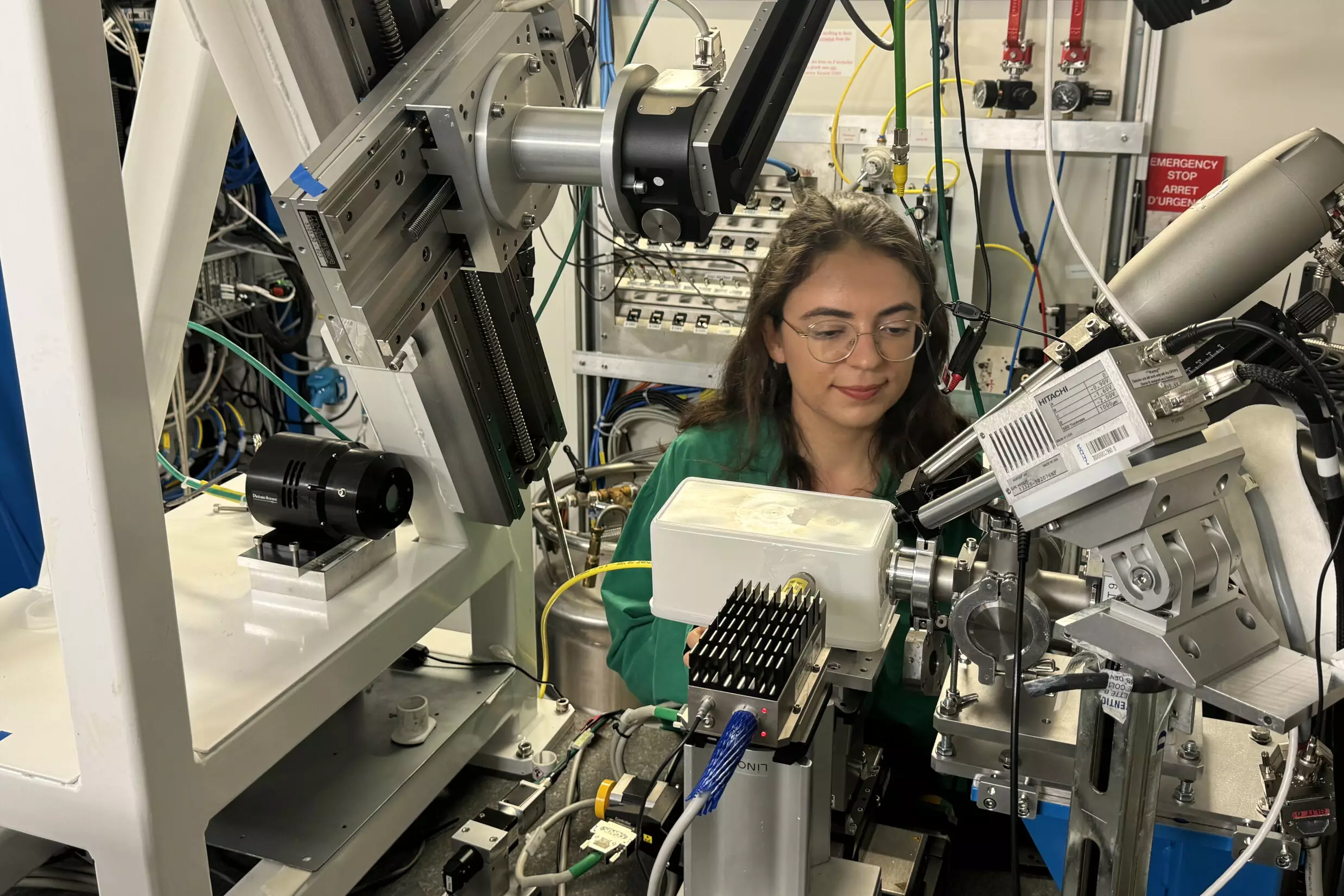Uranium, a well-known heavy metal primarily recognized for its radioactive characteristics, has captivated scientists for decades. While its reputation predominantly stems from its use in nuclear applications, uranium’s chemistry is complex and multifaceted, particularly when examining its various oxidation states. Recent research, involving an international collaboration and utilizing advanced synchrotron techniques at the Helmholtz-Zentrum Dresden-Rossendorf (HZDR) and the European Synchrotron Radiation Facility (ESRF), has offered new insights into low-valent uranium compounds. These findings contribute not only to our understanding of uranium’s chemical behavior but also hold practical implications for environmental safety and nuclear waste management.
The study of low-valent uranium, specifically those states where uranium exhibits an oxidation state of +3, or U(III), challenges existing paradigms about actinide chemistry. As one of the key components in the actinide series on the periodic table, uranium possesses a unique electronic structure characterized by the presence of 5f electrons. These electrons, deeply embedded within the atom’s inner shells, play a crucial role in determining how uranium interacts with other elements. Most uranium compounds observed in typical laboratory conditions contain higher oxidation states, making the exploration of lower valence states like U(III) particularly intriguing.
The research team led by Ph.D. student Clara Silva and Professor Kristina Kvashnina revealed that low-valent uranium compounds contain additional electrons in their inner shells compared to conventional variants. This distinction gives rise to unique bonding behaviors, especially in how uranium interacts with elements such as fluorine and chlorine—further emphasizing the importance of studying these less common oxidation states.
To delve into the intriguing world of low-valent uranium, the researchers employed two highly specialized X-ray techniques: resonant inelastic X-ray scattering (RIXS) and high-energy resolution fluorescence detection combined with X-ray absorption near edge structure analysis (HERFD-XANES). These powerful analytical methods facilitate the measurement of electronic structures by analyzing changes in X-ray energy as they scatter off uranium compounds.
RIXS enables scientists to measure the variability in energy loss, which provides critical information about the arrangement and behavior of electrons within an elemental structure. Similarly, HERFD-XANES enhances the sensitivity of traditional XANES methods by offering a more detailed analysis of uranium’s electronic state, essential for understanding how these low-valent compounds bond. The result of these sophisticated methodologies has culminated in a groundbreaking finding—the direct detection of U(III) oxidation state—redefining our comprehension of actinide bonding mechanisms.
Investigating low-valent uranium compounds is not without its challenges. The inherent instability of these compounds demands meticulously controlled experimental conditions, primarily to prevent unexpected reactions during analysis. The research endeavored to create an anoxic environment, devoid of oxygen, and conducted experiments at low temperatures to maintain stability in the uranium samples. Notably, understanding the intricate data yielded by these experiments required advanced theoretical modeling to map the electronic structures accurately.
An unforeseen finding from the research was the heightened sensitivity of 5f electrons to changes in their immediate environment. This response significantly influences the ionic nature of uranium’s bonds, presenting a compelling reason to reconsider current theories related to actinide bonding. Such revelations have significant ramifications for future studies in both the chemistry and physics of actinides.
Beyond the fundamental importance of the research lies its practical implications. Understanding low-valent uranium compounds can help enhance safety protocols in nuclear waste management, primarily due to their low solubility. The reduced mobility of such compounds helps mitigate contamination risks, a vital aspect in the context of environmental protection and radiation safety.
Furthermore, this study paves the way for a more nuanced approach to modeling the behavior of complex uranium systems, potentially influencing diverse scientific fields from nuclear science to environmental chemistry. As scientists continue to explore the properties of low-valent uranium, the insights derived will undoubtedly expand into applications that address both theoretical and practical concerns in a rapidly evolving scientific landscape.
The research conducted by the teams at HZDR and ESRF stands as a testament to the rich potential inherent in studying low-valent uranium compounds. Through rigorous experimentation and innovative analytical techniques, scientists have unveiled significant insights into the electronic behavior of uranium, challenging existing theories and paving the way for future investigations. The findings foster a deeper understanding of actinide chemistry while also offering solutions for real-world nuclear waste challenges, thus bridging the gap between fundamental research and practical applications.


Leave a Reply